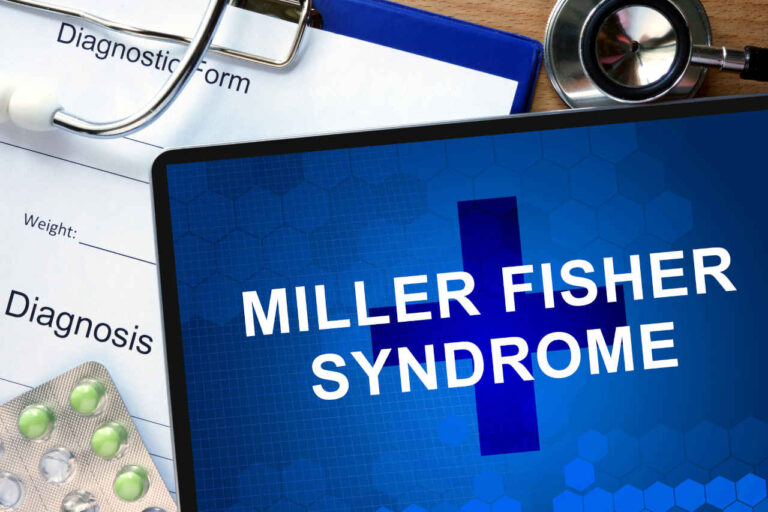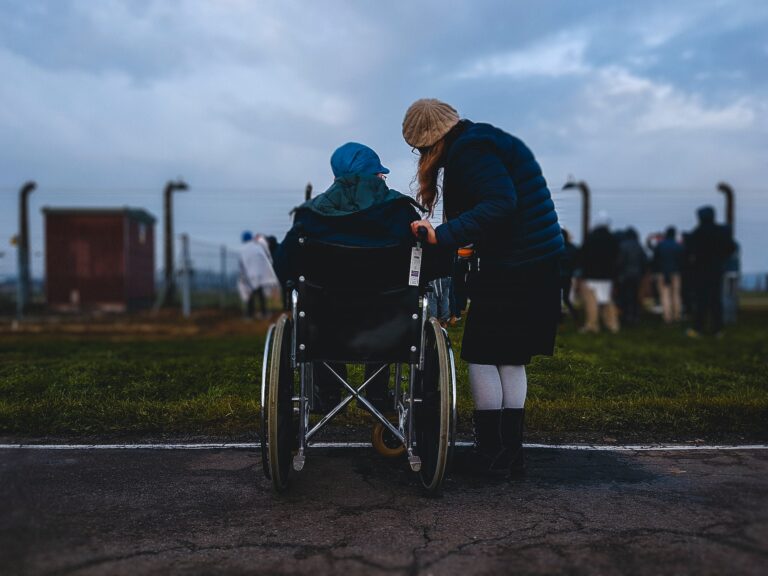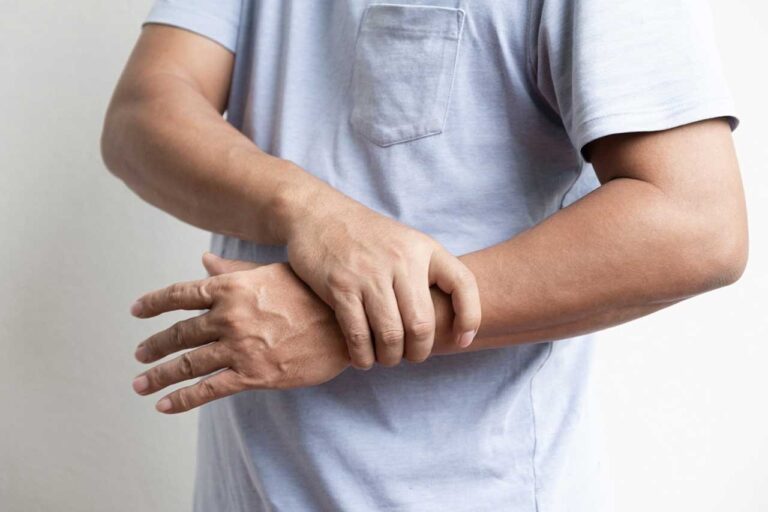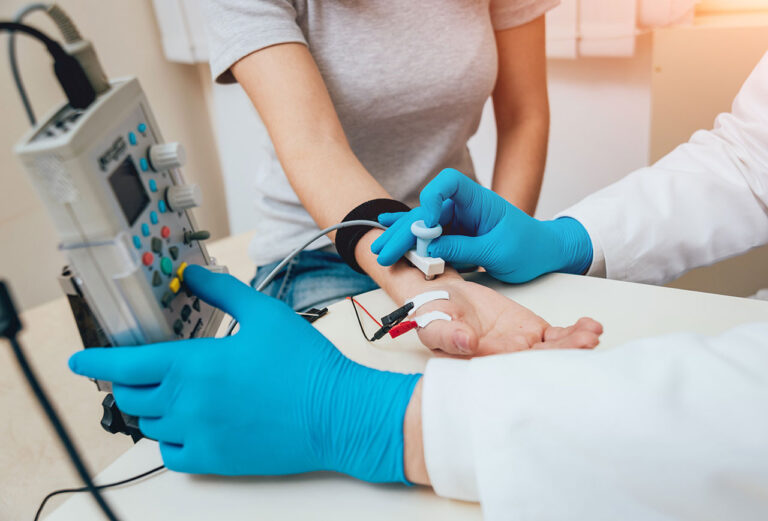
Hội chứng Guillain-Barre (GBS) là một tình trạng thần kinh hiếm gặp có thể gây ra những ảnh hưởng đáng kể đến người bệnh. May mắn thay, những người được chẩn đoán mắc hội chứng Guillain-Barre có thể có triển vọng tích cực về lâu dài và tuổi thọ cao nếu được chăm sóc kịp thời và điều trị thành công bất kỳ bệnh nhiễm trùng đi kèm nào.
Thống kê cho thấy 70% người mắc hội chứng GBS cuối cùng đã hồi phục hoàn toàn mà không ảnh hưởng tiêu cực đến tuổi thọ. Trong bài viết này, chúng ta sẽ đi sâu vào chi tiết về hội chứng Guillain-Barre, bao gồm tỷ lệ sống sót, tiên lượng, các lựa chọn điều trị, v.v.
Nhận hỗ trợ đồng thanh toán IVIG
Nói chuyện với một chuyên giaHiểu về hội chứng Guillain-Barre
Hội chứng Guillain-Barre (GBS) là một rối loạn tự miễn dịch đặc trưng bởi tình trạng yếu cơ và liệt cơ khởi phát nhanh chóng.
Trong tình trạng này, hệ thống miễn dịch của cơ thể tấn công nhầm vào hệ thần kinh ngoại biên. Tình trạng mất myelin xảy ra ở các dây thần kinh ngoại biên, làm gián đoạn việc truyền tín hiệu giữa dây thần kinh và cơ.
Sự gián đoạn này có thể dẫn đến yếu cơ và rối loạn cảm giác. Trong những trường hợp nghiêm trọng, nó thậm chí có thể gây suy hô hấp, làm dấy lên lo ngại về tuổi thọ của những người mắc hội chứng Guillain-Barre.
Các tác nhân phổ biến gây ra GBS
Một số yếu tố có thể gây ra GBS, khiến hệ thống miễn dịch tấn công lớp vỏ myelin bao quanh dây thần kinh.
Các tác nhân gây ra hội chứng Guillain-Barre phổ biến nhất bao gồm:
- Nhiễm trùng: Nhiễm trùng đường hô hấp hoặc đường tiêu hóa, bao gồm cả nhiễm trùng do vi khuẩn campylobacter, vi rút Zika và vi rút cytomegalovirus gây ra, có thể gây ra GBS.
- Tiêm chủng: Trong những trường hợp hiếm hoi, một số cá nhân có thể phát triển GBS sau khi tiêm chủng.
- Phẫu thuật hoặc chấn thương: Chấn thương vật lý hoặc phẫu thuật đôi khi có thể xảy ra trước khi GBS khởi phát.
Các lựa chọn điều trị GBS

Việc quản lý hiệu quả hội chứng Guillain-Barre là rất quan trọng để cải thiện tỷ lệ sống sót và kết quả điều trị. Có nhiều phương pháp điều trị khác nhau giúp kéo dài tuổi thọ cho người mắc hội chứng Guillain-Barre.
Nhóm chăm sóc sức khỏe của bạn sẽ xác định liệu trình điều trị tốt nhất dựa trên mức độ nghiêm trọng của tình trạng bệnh. Dưới đây là một số các lựa chọn điều trị có sẵn cho GBS.
Liệu pháp immunoglobulin tĩnh mạch
Liệu pháp immunoglobulin tĩnh mạch (IVIG) là một trong những phương pháp điều trị chính cho hội chứng Guillain-Barre. Phương pháp điều trị này bao gồm việc sử dụng chế phẩm immunoglobulin có nguồn gốc từ người hiến máu khỏe mạnh.
Các kháng thể này điều chỉnh phản ứng miễn dịch, làm giảm tác hại của kháng thể của bệnh nhân lên hệ thần kinh. Nghiên cứu đề xuất rằng việc sử dụng IVIG sớm có thể cải thiện đáng kể tiên lượng của hội chứng Guillain-Barre, giúp nhiều người phục hồi nhanh hơn.
Sau đây là cách sử dụng IVIG để cải thiện tuổi thọ của những người mắc hội chứng Guillain-Barre:
- Chuyên gia chăm sóc sức khỏe sẽ đánh giá bệnh nhân để xác định liều lượng thích hợp.
- IVIG được chuẩn bị theo đúng quy trình xử lý và truyền dịch.
- Bệnh nhân được truyền IVIG qua đường tĩnh mạch, thường kéo dài từ 3 đến 5 giờ.
- Có thể truyền dịch lại sau 14 đến 28 ngày kể từ lần điều trị đầu tiên.
Huyết tương tách
Huyết tương tách, hay trao đổi huyết tương, là một phương pháp điều trị hiệu quả khác giúp cải thiện tỷ lệ sống sót của những người mắc hội chứng Guillain-Barre. Quy trình này bao gồm việc lấy máu của bệnh nhân, tách huyết tương khỏi các tế bào máu và loại bỏ huyết tương chứa kháng thể gây hại.
Các thành phần máu còn lại sau đó được đưa trở lại cơ thể bệnh nhân. Phương pháp điều trị này có thể cải thiện tuổi thọ của bệnh nhân mắc hội chứng Guillain-Barre bằng cách tăng tốc phục hồi và giảm thời gian kéo dài của các triệu chứng nghiêm trọng.
Sau đây là cách thực hiện lọc huyết tương:
- Máu được lấy từ tĩnh mạch lớn, thường ở cánh tay.
- Máu được xử lý thông qua một máy tách huyết tương ra khỏi các tế bào máu.
- Huyết tương không mong muốn được loại bỏ và các tế bào máu còn lại được trộn với dung dịch thay thế (như albumin).
- Máu đã xử lý được truyền lại vào máu của bệnh nhân.
Chăm sóc hỗ trợ
Chăm sóc hỗ trợ rất quan trọng đối với bệnh nhân và có thể ảnh hưởng đáng kể đến tuổi thọ của người mắc GBS. Phương pháp này bao gồm nhiều liệu pháp khác nhau để giảm triệu chứng và cải thiện chất lượng cuộc sống. Có thể bao gồm kiểm soát cơn đau, vật lý trị liệu, trị liệu nghề nghiệp và hỗ trợ tâm lý.
Sau đây là cách chăm sóc hỗ trợ được thực hiện để kéo dài tuổi thọ của những người mắc hội chứng Guillain-Barre:
- Vật lý trị liệu được tiến hành để duy trì sức mạnh và sự linh hoạt của cơ.
- Các chiến lược kiểm soát cơn đau được phát triển, bao gồm cả thuốc để giảm bớt sự khó chịu.
- Liệu pháp nghề nghiệp tập trung vào việc giúp cá nhân lấy lại sự độc lập trong các hoạt động hàng ngày.
- Tư vấn tâm lý được cung cấp để giải quyết các vấn đề sức khỏe tâm thần và những thách thức về cảm xúc.
Tiên lượng và thời gian phục hồi của hội chứng Guillain-Barre
Điểm yếu nhất thường xảy ra trong vòng bốn tuần sau khi các triệu chứng ban đầu xuất hiện. Các triệu chứng của hội chứng Guillain-Barre có xu hướng ổn định trong giai đoạn này trong nhiều ngày, nhiều tuần hoặc đôi khi là nhiều tháng.
Thời gian hồi phục có thể khác nhau giữa các bệnh nhân, và các triệu chứng có thể biến mất chỉ sau vài tuần đến vài năm. Tuy nhiên, một số người vẫn cho biết tình trạng cải thiện liên tục sau 2 năm.
Kết quả lâu dài có thể khác nhau, nhưng tuổi thọ trung bình của nhiều người mắc hội chứng Guillain-Barre vẫn khả quan. Can thiệp sớm và điều trị phù hợp là rất quan trọng để cải thiện khả năng phục hồi và chất lượng cuộc sống nói chung.
Tỷ lệ sống sót của hội chứng Guillain-Barre
Tỷ lệ sống sót của những người được chẩn đoán mắc GBS là rất cao.
Một ước tính 5% đến 10% của những người bị chậm hoặc hồi phục một phần. Trong khi đó, tỷ lệ tử vong do căn bệnh này là 3% theo một nghiên cứu. Các nguyên nhân tử vong hàng đầu trong nhóm này được báo cáo là suy hô hấp, viêm phổi, ngừng tim và rối loạn chức năng tự chủ.
Các yếu tố ảnh hưởng đến tuổi thọ của hội chứng Guillain-Barre

Nhiều yếu tố có thể ảnh hưởng đến tỷ lệ sống sót và tuổi thọ của những người mắc GBS. Sau đây là phân tích chi tiết hơn về một số yếu tố trong số đó.
Tuổi tác và bệnh đi kèm
Người lớn tuổi thường phải đối mặt với quá trình phục hồi khó khăn hơn do khả năng phục hồi sinh lý giảm, điều này có thể làm chậm quá trình chữa lành và làm tăng mức độ nghiêm trọng của các triệu chứng.
Ngoài ra, các tình trạng sức khỏe hiện có, chẳng hạn như bệnh tiểu đường hoặc bệnh tim mạch, có thể làm quá trình phục hồi trở nên phức tạp hơn và ảnh hưởng xấu đến tiên lượng chung của hội chứng Guillain-Barre.
Mức độ nghiêm trọng của các triệu chứng ban đầu
Mức độ nghiêm trọng của các triệu chứng ban đầu của hội chứng Guillain-Barre ảnh hưởng trực tiếp đến tuổi thọ và khả năng phục hồi hoàn toàn. Những người có biểu hiện yếu cơ nặng hơn và các triệu chứng tiến triển nhanh hơn sẽ có tiên lượng khó khăn hơn.
Các triệu chứng ban đầu nghiêm trọng có thể dẫn đến các biến chứng như suy hô hấp hoặc rối loạn chức năng tự chủ, làm tăng nguy cơ tử vong. Ngược lại, những người có triệu chứng nhẹ hơn của hội chứng Guillain-Barre thường có tỷ lệ sống sót cao hơn và khả năng phục hồi hoàn toàn cao hơn.
Triển vọng dài hạn và chất lượng cuộc sống cho bệnh nhân GBS
Triển vọng dài hạn và tuổi thọ của hội chứng Guillain-Barre khác nhau ở mỗi người. Tuy nhiên, nhiều người đã cải thiện đáng kể chất lượng cuộc sống nhờ được quản lý và hỗ trợ liên tục.
Sau đây là cái nhìn sâu hơn về các triệu chứng lâu dài phổ biến nhất và chiến lược kiểm soát chúng.
Các triệu chứng dài hạn phổ biến
Việc nhận biết các triệu chứng phổ biến lâu dài là điều cần thiết để quản lý hội chứng Guillain-Barre hiệu quả và cải thiện tiên lượng bệnh.
- Khoảng 3% có thể bị tái phát tình trạng yếu cơ và cảm giác ngứa ran nhiều năm sau cơn đau đầu tiên.
- Khoảng 15% người có thể bị yếu cơ lâu dài; một số có thể cần sử dụng khung tập đi, xe lăn hoặc nẹp mắt cá chân liên tục. Sức mạnh cơ bắp có thể không hồi phục đồng đều.
- Khoảng 30% vẫn còn yếu sau 3 năm.
Quản lý đang diễn ra
Mệt mỏi, đau nhức và các cảm giác dai dẳng khác đôi khi có thể gây khó chịu. Cách tốt nhất để đối phó với tình trạng mệt mỏi là tham gia các hoạt động nhịp nhàng và dành thời gian nghỉ ngơi đầy đủ khi mệt mỏi xuất hiện.
Những người mắc hội chứng Guillain-Barre cũng gặp khó khăn về mặt cảm xúc khi nghĩ đến tuổi thọ của mình. Họ thường gặp rất nhiều khó khăn khi phải đối mặt với tình trạng tê liệt đột ngột và cần sự giúp đỡ của người khác trong các hoạt động thường ngày.
Người bệnh được khuyến khích tìm kiếm sự hỗ trợ tâm lý vì điều này giúp họ thích nghi và có thể góp phần cải thiện tuổi thọ chung của người mắc hội chứng GBS. Các nhóm hỗ trợ thường giúp giảm bớt căng thẳng về mặt cảm xúc và cung cấp thông tin hữu ích. [2]
Điều hướng GBS với Nhà thuốc chuyên khoa AmeriPharma®
Tỷ lệ sống sót cao của hội chứng Guillain-Barre có nghĩa là bạn có thể kiểm soát tình trạng này hiệu quả bằng cách điều trị kịp thời. Nhà thuốc chuyên khoa AmeriPharma® ở đây để cung cấp phương pháp điều trị bạn cần.
Được chứng nhận URAC của chúng tôi hiệu thuốc chuyên khoa cung cấp truyền IVIG tại nhà và các loại thuốc khó tìm ở hơn 40 tiểu bang và vùng lãnh thổ của Hoa Kỳ.
Hãy liên hệ với chúng tôi ngay hôm nay nếu bạn đang phải đối mặt với hội chứng Guillain-Barre và cải thiện tuổi thọ của bạn với dịch vụ phối hợp toàn diện của chúng tôi, hỗ trợ đồng thanh toánvà hỗ trợ 24/7/365.












